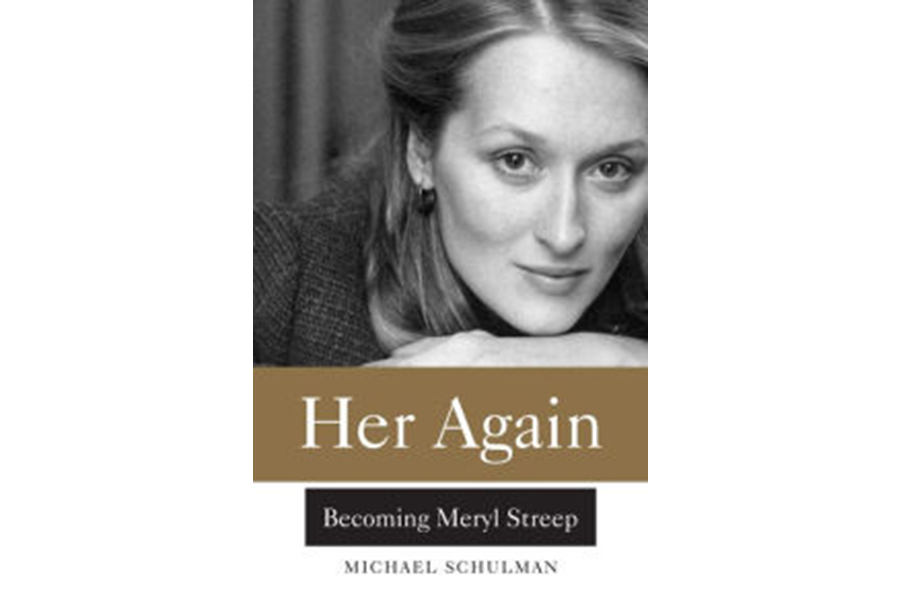'Her Again' tells how Meryl Streep became a star
Loading...
In a world where movies are dominated by male stars, and actresses’ careers die a sudden death at 40, along with their perceived sex appeal, Meryl Streep has been a rare exception. She has dominated marquees since the 1980s, building a career not of bombshells, girls-next-door, or other flat female stereotypes, but of substantive, strong, morally complex characters. How she grew into such a remarkable presence on stage and screen is the subject of Michael Schulman’s new biography, Her Again: Becoming Meryl Streep.
Schulman, who works at the New Yorker as the theater editor of Goings On About Town, brings to his subject a deep knowledge of the New York theater world of the 1970s, when Streep made her rapid ascent. Schulman's Streep is a homecoming queen, but slightly uneasy with her position above the crowd. Schulman emphasizes Streep’s feminism, much as Karina Longworth did in "Meryl Streep: Anatomy of an Actor" (2014), but rather than analyze her major films, Schluman explores Streep’s youth, education, and exposure to various actors and directors during her 20s, as key to understanding her evolution.
As a reader, it’s sometimes hard to root for Streep, who seems always to be the most beautiful, talented young woman in the room. Yet Schulman provides such vivid examples of the relentless sexism she faced, that Streep emerges as a hero both for speaking her mind and fleshing out two-dimensional female characters. Unabashed about issues other aspiring actresses might have pussyfooted around, she once told The New York Times, “Linda [of "The Deer Hunter"] is essentially a man’s view of a woman. She’s extremely passive, she’s very quiet, she’s someone who’s constantly vulnerable […] I tend to think she’s someone who will grow up into one of the millions of neurotic housewives.” In "Kramer vs. Kramer," she rewrote Joanna’s pivotal courtroom speech for director Robert Benton, who could see that it wasn’t working. In her infamous "King Kong" audition, the producer referred to her in his native Italian as “brutta,” or ugly – and Streep shot back in Italian that what he saw was what he got, most offended at his assumption that she couldn’t understand Italian.
Streep’s years at Yale are among the richest sections. The School of Drama was chaotic, rife with faculty power struggles that fostered anxiety in its students, including Sigourney Weaver and the playwrights Christopher Durang and Wendy Wasserstein. Streep didn’t appear to receive instruction in any consistent or useful way, so much as opportunities. Durang cast her in his play "The Idiots Karamazov" as a campy wheelchair-bound octogenarian, and the Yale faculty in everything from the Brecht-Weill musical "Happy End" to "Major Barbara" to "A Midsummer Night’s Dream." In fact, Streep’s frequent casting as leading lady prompted her fellow acting students to complain, and she even tried to back out of some parts during her final year.
Schluman also paints a vivid picture of Manhattan in the 70s when the streets were filled with garbage and the stars were DeNiro, Hoffman and Redford. Joseph Papp plays a major role here by recognizing Streep’s talent – he cast her as leads in "Henry V," "The Cherry Orchard," and "The Taming of the Shrew" – and in his transformation of the New York theater scene through the Central Park Delacorte and the Public Theater.
Just as strong an influence, was the actor John Cazale, best known for playing Fredo Corleone in "The Godfather." Cazale was cast opposite Streep in Papp’s production of "Measure for Measure," where their romance ignited. She was deeply devoted to him throughout their relationship, which ended with his death from lung cancer when Streep was just 28. Schulman’s implies Cazale influenced Streep especially through the tragic nature of their love affair, which deepened her work, becoming a source to draw on in later films such as "Kramer vs. Kramer."
The one oddity of "Her Again" is what it emphasizes and omits. Streep’s high school years drag out unnecessarily, and Schulman slows the action down when describing the Oscars where Streep won for "The Iron Lady" and for "Kramer vs. Kramer," presumably for dramatic effect. It feels a bit artificial to dwell on these sections, only to cut the book short before Streep’s casting in pivotal films like "Silkwood" or "Sophie’s Choice." And after his in-depth look at her relationship with Cazale, Schulman’s treatment of her marriage to the sculptor Don Gummer and her experience as a mother of four feels slight. Perhaps he’s saving this for a sequel ?
The premise seems to be that Mary Louise Streep “became” Meryl when she received her Best Supporting Actress Oscar, which has a nice symmetry since it took place in 1980 when she had recently married and was moving to Connecticut at the age of 30. But didn’t her life and craft continue to evolve in interesting ways after turning 30? As a feminist, Streep would surely say yes.








